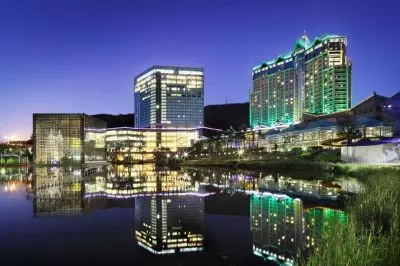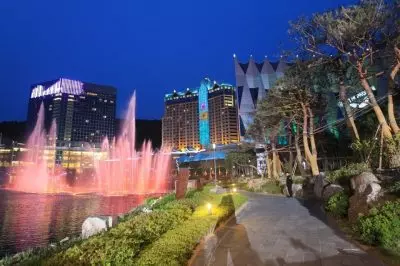 Kangwon Land’s management has an official order to limit its gambling revenue. The venue, which is currently the only casino on the territory of South Korea that accepts local residents as patrons, is being operated under a revenue cap and in the last few years have taken active measures to cut the revenue generated by its slot machines and gaming tables.
Kangwon Land’s management has an official order to limit its gambling revenue. The venue, which is currently the only casino on the territory of South Korea that accepts local residents as patrons, is being operated under a revenue cap and in the last few years have taken active measures to cut the revenue generated by its slot machines and gaming tables.
The thing is that the Government of South Korea has been concerned about the possibility for gambling addiction rates to spread across the country, so it has been focused on enforcing some limits to casino gambling among local residents. For the time being, there are 17 casino venues in South Korea, but 16 of them allow access to foreigners only. Such casinos could also be accessed by South Koreans who own an overseas passport.
So, currently, the 51%-government-owned Kangwon Land is the only casino which welcomes both Korean and foreign residents. In 2018, it generated an overall revenue estimated at $1.2 billion, which is more than the combined revenue of the other 16 casinos which operate in the country.
Kangwon Land has been operating in South Korea for almost two decades. The casino started operation in 2000 at the current High1 Resort’s ski area location, but in 2003 relocated to its present site. For the time being, about one-quarter of the casino’s pre-tax profits are redirected to the Closed Coal Mine Fund which is operated by the country’s Government.
Kangwon Land Expected to Keep Monopoly on South Korean Casino Patrons
 Back in 2018, the revenue generated at Kangwon Land fell by 8% in comparison to the result a year earlier, reaching $63 million. The operating profit suffered a 31% decline.
Back in 2018, the revenue generated at Kangwon Land fell by 8% in comparison to the result a year earlier, reaching $63 million. The operating profit suffered a 31% decline.
Under the gambling revenue cap policy of the South Korean Government, Kangwon Land has taken some active measures to reduce casino take, including cutting the number of tables from 200 to 180, and operating even fewer, imposing certain restrictions to VIP memberships, as well as reducing casino operation hours, which were later shifted as part of the casino management’s efforts to reverse declines.
Currently, the casino venue is also focused on boosting its non-gaming revenue, following suit not only of Macau but also other casino jurisdictions across Asia. As part of these efforts, Kangwon Land opened the largest golf course in Korea back in 2005. A few years later, in 2011, convention hotel and facilities adjacent to the casino hotel started operation, and in July 2018, an indoor-outdoor water park was opened.
The CEO of the casino, Moon Taegon, has further revealed other ambitious plans for the area, including non-gambling facilities. The new additions that are considered by the management of Kangwon Land are expected to be found attractive not only by local residents but by foreigners, too, so the place would probably try to become more dependent on non-gambling revenue in the upcoming years. Still, according to some analysts, the casino would continue to hold the monopoly on South Korean casino players even after the monopoly settlement expires in 2025.